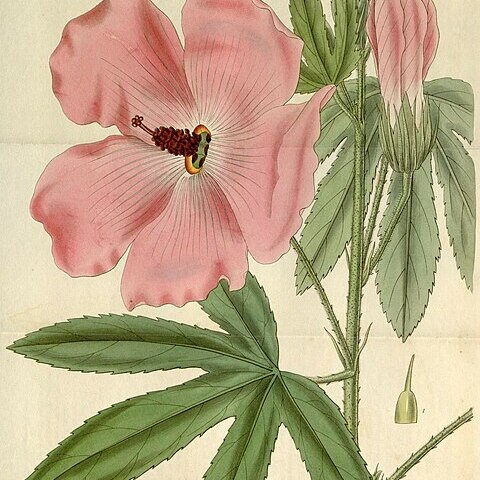A large shrub or small tree. It grows 3-6 m high and spreads 2-3 m across. The branches are at an angle but erect. They are grey and velvety. There are a few prickles. The leaves are broad and bright green. They are 7-18 cm long by 3-15 cm wide. The lower leaves often have 3-5 lobes. The leaves have teeth along the edge. The leaf stalks are 1-9 cm long. The flowers are large and pink with a dark red blotch in the centre. They are 12-15 cm across. The flowers occur singly in the axils of the upper leaves. The fruit is a capsule 2.5-3 cm long by 2-2.5 cm wide. They are oval and densely hairy. The seeds are smooth.


